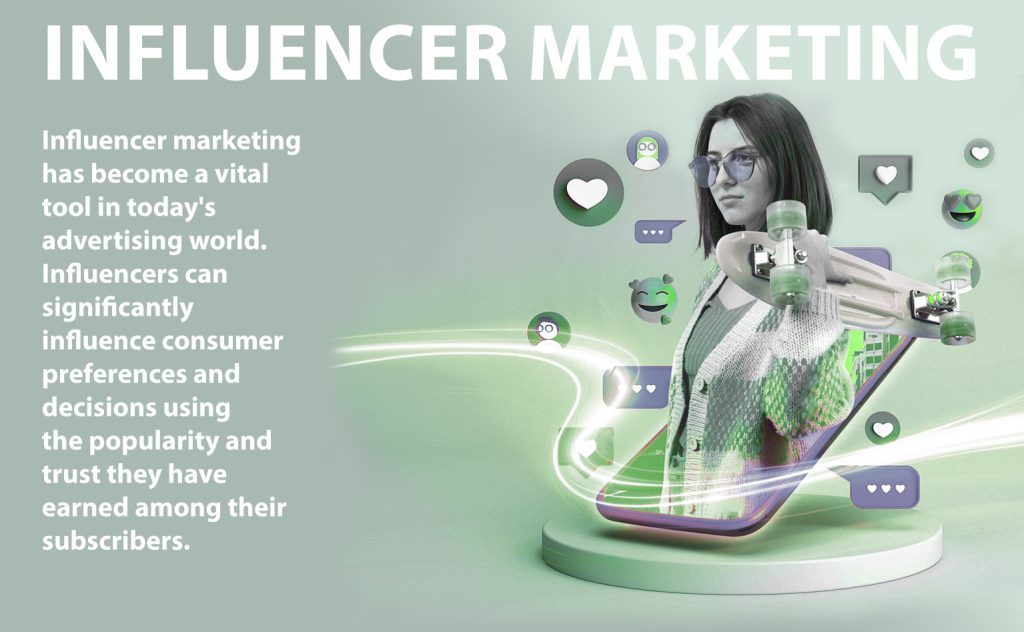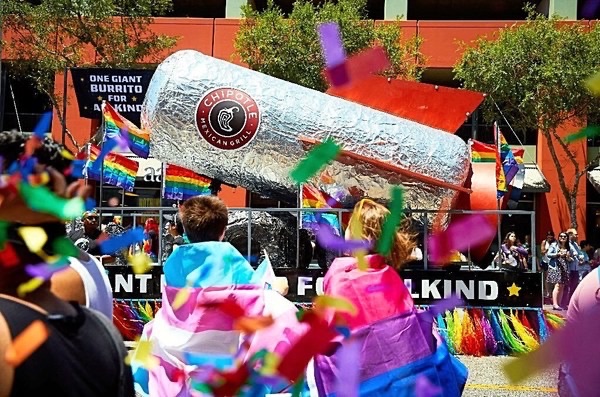Let’s talk today about the dispute between Influencers and traditional advertising. You often hear arguments about who is better and more effective to buy advertising from. One category is Influencers, who significantly influence social media and can create trends. On the other side is traditional advertising, which has long been a mainstay of marketing strategies. But which method is better? In this article, we will compare these two methods, looking at their advantages and disadvantages.
Let’s dive into these questions to understand how these strategies work and what they can offer your business.
Influencer marketing

Influencer marketing features:
- Personalisation and trust: Influencers create a more personal and trusted connection with the audience.
- Targeting: Advertising through influencers allows you to target a specific audience precisely.
- Engagement: Influencers often have high subscriber engagement levels, which increases the effectiveness of advertising messages.
Benefits:
+Influencer recommendations are perceived as more genuine and discreet.
+Influencer marketing can be more budget-effective than traditional advertising.
+Influencers often offer innovative and creative approaches to advertising.
Disadvantages:
-Not every influencer can adequately represent brand values and image.
-Influencer marketing results can vary widely depending on the choice of influencer and its audience.
-Difficulties in accurately measuring the impact and ROI of Influencer campaigns.
Influencer marketing, therefore, offers an opportunity for brands to go beyond traditional advertising and create a deeper connection with audiences. At the same time, it requires an understanding and respect for how Influencers interact with their subscribers to maximise the effectiveness of this marketing approach.
Traditional advertising

Features of traditional advertising:
- Wide reach: Traditional advertising can reach a large audience quickly.
- Brand image building: Creates long-term perception and brand recognition.
- Simplicity and accessibility: Easy to be perceived by a broad audience without an internet connection.
Benefits:
+May have a long-term effect on brand perception.
+Considered as a more reliable and trusted source of information.
+ Total control over the content and placement of adverts.
Disadvantages:
-Traditional advertising often requires significant investment.
-It isn’t easy to track direct audience response to an advert.
-May not be effective in reaching specific market segments.
Traditional advertising remains a powerful tool for influencing consumers, especially regarding brand reinforcement and long-term brand awareness. Combined with other marketing tools, such as influencer marketing, it can help create a balanced and versatile marketing mix that effectively achieves brand goals across multiple platforms and audiences.
Efficiency comparison

Reach and engagement:
- Influencers: While reach may be lower than traditional advertising, engagement is often higher, leading to deeper engagement with the brand.
- Traditional advertising: Provides a broad reach, but engagement can be lower as the ad is perceived as less personalised.
Cost and ROI:
- Influencers: While initial costs may be lower, measuring an accurate ROI can be difficult. Effectiveness depends on choosing the right influencer and its relevance to the brand.
- Traditional advertising: High placement and creation costs, but more predictable and measurable ROI. It can be effective for specific commercial objectives, such as increasing brand awareness.
Target audiences and contexts:
- Influencers: Ideal for targeted, niche audiences, particularly effective in the fashion, beauty, travel and technology segments.
- Traditional advertising: Better suited to large-scale campaigns to reach large audiences with generalised messages.
Analysing success cases of influencers and traditional advertising

This section will examine case studies of successes and failures in Influencer Marketing and Traditional Advertising. These cases will help us further understand what factors contribute to the effectiveness of each approach, as well as identify their pros and cons. We will analyse real-life situations where brands have used either Influencers or traditional advertising channels to achieve their marketing goals and evaluate how these strategies have impacted their success.
Examples of successful Influencer Marketing success stories
- Magnum “True To Pleasure”: In collaboration with singer Halsey, Magnum launched a campaign utilising stories of people sharing their pleasures. The campaign targeted Instagram and TikTok, increasing user-generated content and social engagement and driving Magnum Ruby ice cream sales.

- Chipotle: This brand leveraged collaborations with well-known Influencers, including David Dobrick and Shawn Mendes, and even launched a Chipotle Influencer Class to promote its products. A drag queen campaign honouring LGBTQ+ Pride Month was particularly successful, featuring Trixie Mattel, Kim Chi and Gothmik.

- Häagen-Dazs: For the #HaagIndoors campaign, working with nano and micro-influencers, Häagen-Dazs focused on promoting the new Secret Sofa initiative and increasing ice cream sales on Amazon Prime Now. The campaign included original content creation by Influencers on platforms such as Instagram, Facebook and TikTok.

Examples of successful traditional advertising
Traditional advertising, although only sometimes as easily traceable in the context of specific campaigns, remains an essential element of many major brands’ marketing strategies. Examples of successful campaigns include:
- Coca-Cola: Their long-term advertising campaigns, such as ‘Share a Coke’, where bottles were personalised with names, became widely known and helped to strengthen the brand.

- Nike: Nike’s advertising campaigns, especially those featuring famous athletes such as Michael Jordan or LeBron James, remain iconic and have helped reinforce the brand’s position as a symbol of athletic success and motivation.

- Apple: Apple is known for its innovative advertising campaigns that emphasise the uniqueness and design of its products, contributing to the brand’s image as a leader in technology and innovation.

Integration of strategies
In the era of digital technology and social media, marketers often choose between influencer marketing and traditional advertising methods. However, rather than choosing one at the expense of the other, what about integrating both strategies to maximise effectiveness? In this section, we explore how integrating Influencer Marketing and traditional advertising can create a unique synergy that enhances marketing efforts and improves overall results.

Synergy of methods:
Combining approaches: Integrating Influencer Marketing and traditional advertising can provide broader reach and deeper audience engagement.
Message reinforcement: Using Influencers to reinforce traditional advertising messages can amplify their impact.
Planning and execution:
- Clearly define what goals you want to achieve with each approach.
- Understand which audience segments respond best to each approach.
- Ensuring that messages delivered through different channels are consistent and reinforce each other.
Final thoughts
As we conclude our analysis of the battle between Influencer Marketing and traditional advertising, we can see that each channel has its advantages and unique characteristics. Influencer Marketing brings authenticity and personal relationships to marketing channels, while conventional advertising remains a reliable way to reach a broad audience and strengthen a brand.
However, the most important thing we’ve learnt is that it’s not the individual strategies that are most effective but the combination of them. Combining the personal approach of Influencers with traditional advertising and authority can result in a holistic and balanced marketing campaign that maximises the strengths of each channel. Choosing between influencers and traditional advertising depends on a company’s specific goals, target audience and budget. However, flexibility and a willingness to shift strategies can open up new opportunities for progress and success in the dynamic world of modern marketing.
